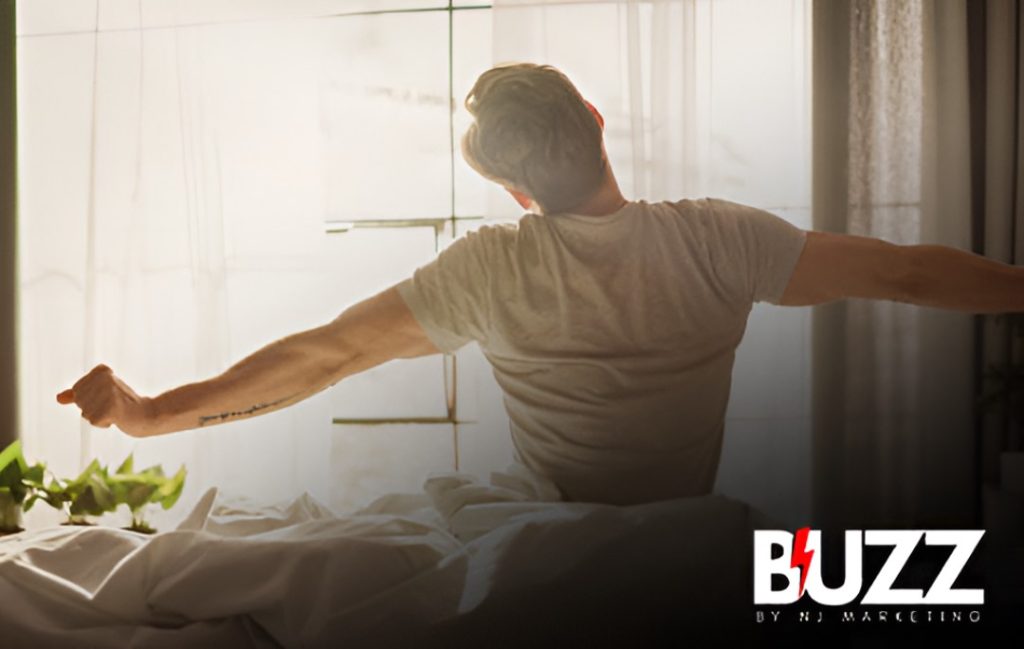For years, I blamed my terrible sleep on stress, screens, and too much coffee. I tried everything, fancy pillows, blackout curtains, sleep apps, and even herbal teas. But nothing worked for long. My mornings always felt like a fog I couldn’t escape from.
Then, one small change transformed everything: stepping outside to catch the morning sunlight.
At first, it sounded too simple to be real. How could sunlight, something free and already there, fix my restless nights? But within a few weeks, my sleep routine changed so dramatically that I had to share the story.
This post isn’t just about my journey; it’s about the science, the habits, and the small shifts that can help you reset your body’s clock, too.
My “Before” Sleep Routine and Why It Was Failing
Before I discovered the power of morning sunlight, my sleep routine was a mess:
- I scrolled through my phone in bed until midnight.
- My wake-up times shifted between 7 a.m. and 10 a.m.
- I felt groggy and drained, no matter how many hours I slept.
Every night, I’d promise to sleep early, but the next morning I woke up feeling like I’d barely rested. It wasn’t just exhaustion, it was a cycle of inconsistent light exposure confusing my body’s internal clock.
The Science | Why Morning Sunlight Impacts Sleep
Morning sunlight isn’t magic, it’s biology.
Our bodies run on a natural rhythm called the circadian rhythm, a 24-hour internal clock that regulates when we feel awake or sleepy. The main cue that sets this rhythm? Light.
When you expose your eyes to bright morning sunlight, it signals your brain to:
- Suppress melatonin (the sleep hormone) early in the day.
- Boost cortisol and serotonin, which increase alertness and mood.
- Reset your body clock, helping you feel sleepy at a consistent time later at night.
Research from institutions like Stanford Medicine and Harvard Health confirms that regular morning light exposure helps people fall asleep faster and sleep more deeply.
It’s simple but powerful: sunlight in the morning tells your body it’s daytime, and darkness later tells it it’s time to rest.
The Turning Point | My First Week of Morning Sun
After learning about circadian rhythms, I decided to test them for myself. My rules were simple:
- Step outside within 30 minutes of waking up.
- Spend at least 10–15 minutes in natural light.
- Avoid sunglasses (unless the light was harsh).
- No phone until after sunlight exposure.
At first, it felt weird standing on my balcony doing nothing. But soon, those quiet minutes became my favorite part of the day. I’d sip coffee, listen to birds, and just let the light hit my eyes (without staring directly at the sun).
By day four, I noticed something, I started getting sleepy around 10 p.m. naturally. And by week two, I was waking up before my alarm, feeling alert for the first time in years.
What Changed in My Sleep Routine
The difference was almost unbelievable. Within two weeks:
- I fell asleep 30–45 minutes faster.
- I woke up without the “morning fog.”
- My mood felt lighter and calmer throughout the day.
- Even my afternoon crashes became less frequent.
- It wasn’t that I was sleeping longer, I was sleeping better.
Morning sunlight helped anchor my body clock so I could sleep and wake up at consistent times. It was like my body finally remembered what natural rhythm felt like.
How You Can Make Morning Sunlight Work for You
Even if you live in a busy city or have a packed schedule, you can still make morning sunlight part of your routine. Here’s how:
Go outside soon after waking up
- Aim for the first 30–60 minutes after waking. Step outside, take a walk, or just stand on your porch.
Spend at least 5–15 minutes outdoors
- Sunny day → 5–10 minutes is enough.
- Cloudy day → stay out for 15–30 minutes since the light is diffused.
Skip the sunglasses (briefly)
- You don’t need to stare at the sun, just let natural light reach your eyes directly.
Open curtains and windows
- If you can’t step outside, get near a sun-facing window. Natural light, even through glass, helps more than indoor bulbs.

Combine it with a simple habit
Pair it with something you already do:
- Drink your morning coffee outside.
- Walk your pet.
- Stretch or meditate in sunlight.

Stay consistent
- Your circadian rhythm thrives on regularity. Even weekends count, try waking up at a similar time every day.
Morning Light + Good Sleep Hygiene = Powerful Combo
Morning sunlight is just one piece of the puzzle. To make the most of it, combine it with healthy nighttime habits:
- Limit screens an hour before bed (blue light delays melatonin).
- Keep your room dark and cool for optimal sleep.
- Avoid caffeine after 3 p.m.
- Stick to a bedtime routine, read, stretch, or relax.
- Dim indoor lights in the evening to signal your brain that bedtime is near.
Together, these small adjustments create the perfect balance: bright light in the morning, soft darkness at night. That contrast trains your brain to know when to be alert and when to rest.
Realistic Expectations | It’s Not Instant Magic
You might not feel an overnight change, I certainly didn’t.
Most people notice better energy and focus after a few days, but deeper sleep improvements can take 2-4 weeks. The key is consistency.
Also, keep in mind:
- Everyone’s body clock is unique.
- Teenagers naturally have a “delayed” rhythm, so patience is key.
- If you struggle with chronic insomnia or fatigue, consult a sleep specialist, sunlight can help, but medical advice is still important.
My Ongoing Routine
Months later, morning sunlight is non-negotiable for me. Even on cloudy days, I step outside after waking up. On busy mornings, I drink my coffee by a window facing east.
Here’s what my current routine looks like:
- Wake up: 7 a.m.
- Sunlight time: 7:10 a.m.–7:25 a.m. (balcony coffee or short walk)

- Nighttime: lights dim at 9:30 p.m., no screens after 10 p.m.
When I travel, I adjust my exposure time to match local sunrise, it helps me beat jet lag and sleep better almost instantly.
Quick FAQs
Q: What if I wake up before sunrise?
Use bright indoor light temporarily, then get outside once the sun’s up.
Q: Can I just sit by a window?
Yes, but outdoor light is 50–100x stronger, so it’s more effective.
Q: How long before results show?
Some notice changes in a week, most within two to four weeks.
Q: Is sunlight safe for kids and teens?
Yes, early light exposure helps regulate their sleep naturally, especially when school schedules disrupt rest.
The best part about morning sunlight? It costs nothing, takes minutes, and can completely reset how your body feels every day.
After years of struggling, my sleep routine finally feels effortless, all because I made friends with the sunrise.
So tomorrow morning, before you check your phone, step outside.
Let the light hit your eyes, take a breath, and feel your body wake up the way it’s designed to.
Better nights truly start with brighter mornings.
Don’t Miss Out Our Blog Post: What Happens When You Drink Apple Cider Vinegar Every Day


